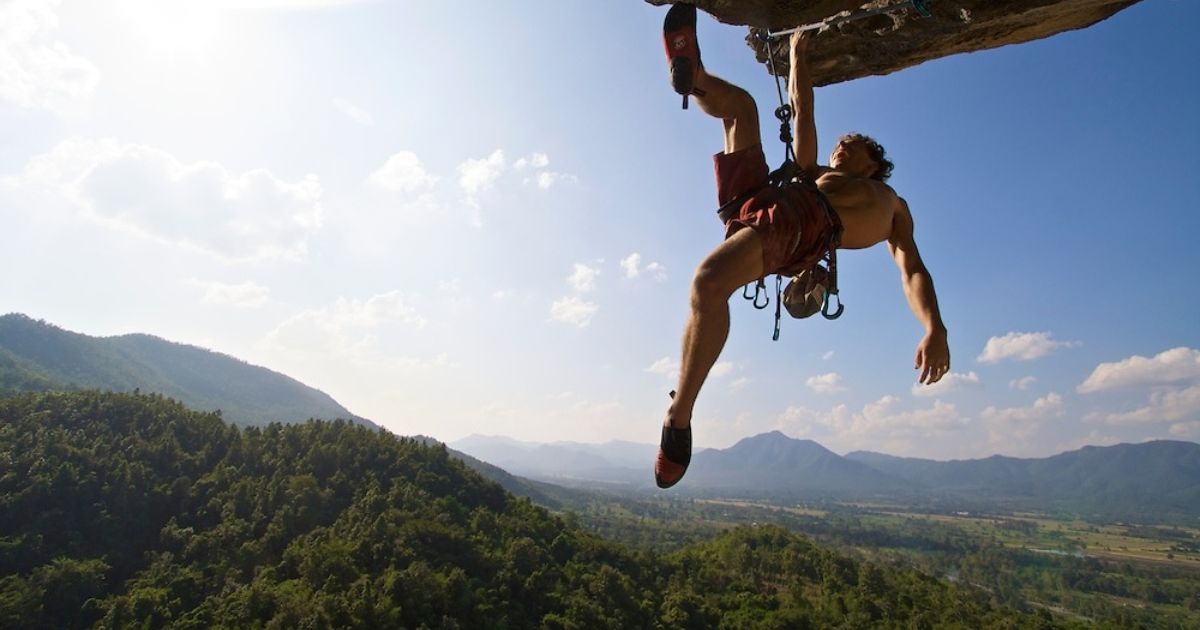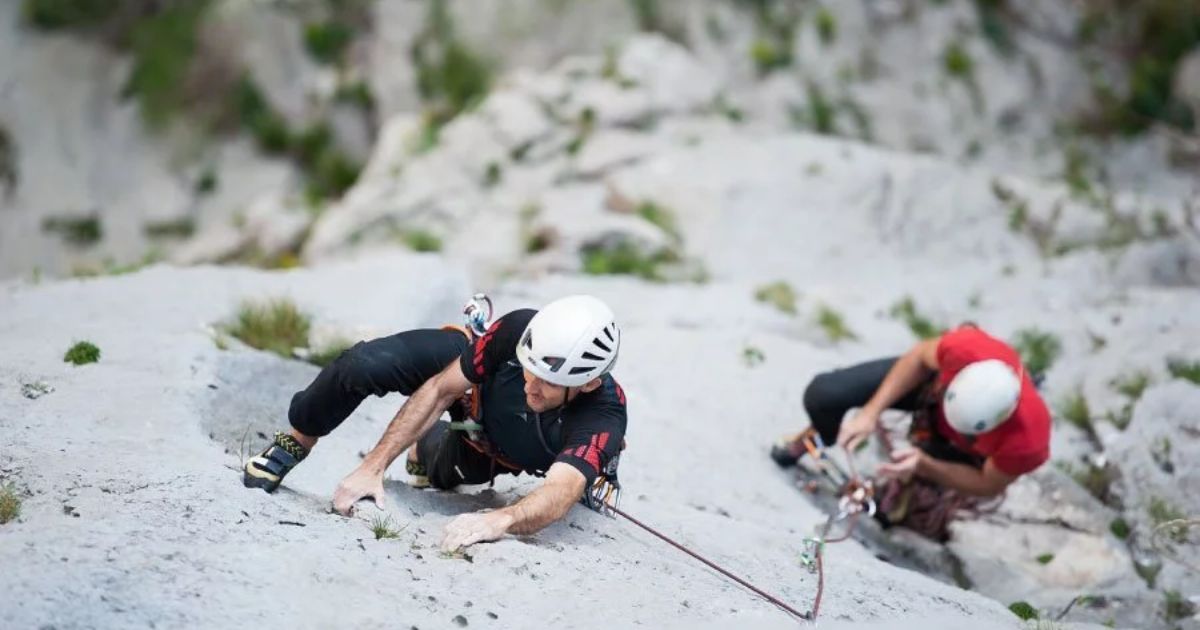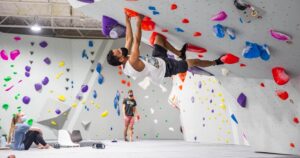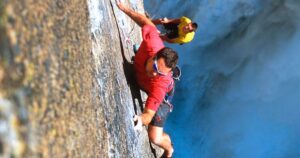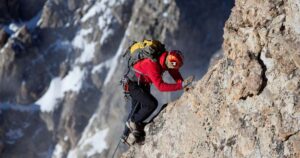Rock climbing, a challenging and captivating endeavor that tests both mind and body, beckons those seeking a thrilling yet demanding physical pursuit. The art of ascending vertical walls, cliffs, and mountains requires a unique combination of physical strength, technical skills, mental fortitude, and a keen understanding of risk and safety. As climbers navigate through various types of climbing, progression and difficulty levels become ever more enticing. Delve into the world of rock climbing and discover the exhilarating journey that awaits those who dare to embark on this extraordinary adventure.
Key Takeaways
- Rock climbing requires a high level of physical fitness, strength, and exceptional muscle endurance.
- Mastery of various technical skills and proper use of protective equipment are essential for safety.
- Developing mental fortitude, problem-solving skills, and emotional regulation are crucial for success in rock climbing.
- Progression in rock climbing involves mastering different techniques, reading routes, and continuous practice to improve skills.
Physical Demands
Rock climbing requires a high level of physical fitness and strength. It is a demanding sport that challenges both the mind and body. Injury prevention is a key aspect of rock climbing, especially when considering activities like “Rock Climb With Long Nails,” as the sport involves navigating uneven terrain, unpredictable weather conditions, and potential falls. Proper technique, equipment, and training are essential to minimize the risk of injuries.
Additionally, rock climbing demands exceptional muscle endurance. Climbers must be able to sustain their strength over extended periods of time, as climbs can last hours or even days. Every move requires the engagement of multiple muscle groups, from the arms and shoulders to the core and legs. Building and maintaining muscle endurance is crucial for success in rock climbing, allowing climbers to tackle long routes and challenging terrain with confidence and efficiency.
Technical Skills
One important aspect of rock climbing is the mastery of various technical skills. These skills encompass the knowledge and proficiency required to safely navigate the challenging terrain and vertical surfaces. To engage in rock climbing, climbers must be equipped with the necessary gear, which typically includes a harness, helmet, ropes, carabiners, and climbing shoes.
These tools are essential for both safety and efficiency during climbs. However, it is important to note that the equipment needed may vary depending on the type of climbing, such as sport climbing or traditional climbing. While rock climbing can be an exhilarating activity, it also carries risks. Common injuries in rock climbing include sprains, fractures, and strains. Therefore, climbers must prioritize proper technique, use of protective equipment, and awareness of their physical limitations to minimize the risk of injury.
Mental Fortitude
Developing mental fortitude is crucial for rock climbers to overcome the mental challenges they face on the wall. Rock climbing requires not only physical strength and technical skills but also mental resilience to push through fear and uncertainty. Here are four key aspects of mental fortitude that rock climbers must cultivate:
- Mindfulness: Being fully present in the moment helps climbers focus on their movements and make quick decisions, reducing the impact of fear and doubt.
- Positive self-talk: Encouraging oneself with positive affirmations can help climbers overcome fear and boost confidence.
- Visualization: Mental imagery of successful climbs can help climbers prepare mentally and increase their belief in their abilities.
- Emotional regulation: Learning to manage emotions such as fear and anxiety is essential for maintaining focus and making rational decisions while climbing.
Risk and Safety
Rock climbing involves inherent risks and requires careful attention to safety measures. One of the most important aspects of ensuring safety while rock climbing is using proper equipment and gear. Climbers should invest in high-quality harnesses, ropes, helmets, and climbing shoes to minimize the risk of accidents. Additionally, it is crucial to understand and practice proper climbing techniques.
This includes learning how to tie knots correctly, belaying properly, and using effective climbing strategies. By mastering these techniques, climbers can reduce the chances of falls or injuries. It is also important to regularly inspect and maintain gear to ensure its reliability. Lastly, climbers should always prioritize their safety by being aware of their limits and monitoring weather conditions before embarking on any climbing adventure.
Training and Conditioning
Climbers must prioritize their training and conditioning to build the strength and endurance necessary for the challenging sport of rock climbing. Here are four essential elements to consider when training for rock climbing:
- Strength training: Building upper body and core strength is crucial for rock climbers. Exercises like pull-ups, push-ups, and planks help develop the muscles required for gripping and pulling.
- Endurance training: Rock climbing demands sustained effort over long periods of time. Training in activities such as running, cycling, or swimming can improve cardiovascular endurance, enabling climbers to perform for extended periods without fatigue.
- Finger and grip strength exercises: Rock climbers need strong fingers and a powerful grip to hold on to rocks and supports. Fingerboards, campus boards, and grip strengtheners can help develop these specific muscles.
- Flexibility and mobility training: Stretching exercises and yoga can improve flexibility and mobility, allowing climbers to move more efficiently and reduce the risk of injuries.
Different Types of Climbing
There are various types of climbing that offer unique challenges and opportunities for climbers to test their skills and push their limits. Two popular types of climbing are traditional climbing and sport climbing.
Traditional climbing, also known as trad climbing, involves placing protective gear, such as cams and nuts, into cracks and fissures in the rock to secure the rope. This type of climbing requires a high level of technical skill and experience, as climbers must assess the rock for suitable placements and make decisions on the fly.
On the other hand, sport climbing involves pre-placed bolts that climbers clip into as they ascend the route. This type of climbing focuses more on physical strength and endurance, as climbers can focus solely on their movement without the added mental challenge of gear placements.
Here is a comparison between traditional climbing and sport climbing:
| Traditional Climbing | Sport Climbing |
|---|---|
| Requires gear placements | Pre-placed bolts |
| High level of technical skill | Focus on physical strength |
| The mental challenge of gear placements | Focus on movement |
Both types of climbing offer their own unique challenges and rewards, providing climbers with endless opportunities to explore and conquer new heights. Whether you prefer the mental puzzle of traditional climbing or the physical demands of sports climbing, there is a type of climbing for everyone.
Progression and Difficulty Levels
As climbers progress in their rock climbing journey, they encounter various difficulty levels that challenge their skills and abilities. The progression challenges and skill development involved in rock climbing are what makes it both exciting and fulfilling. Here are four levels of difficulty that climbers may encounter:
- Beginner: Climbing routes suitable for beginners usually have large holds and straightforward movements. It is an excellent starting point for those new to the sport.
- Intermediate: At this level, climbers face more complex routes with smaller holds and steeper angles. It requires improved technique, strength, and endurance.
- Advanced: Advanced climbers tackle challenging routes that demand precise footwork, finger strength, and advanced climbing techniques. These routes often require problem-solving skills to overcome difficult sections.
- Expert: Climbers at this level take on the most difficult and demanding routes. They possess exceptional climbing skills, strength, agility, and mental focus to conquer the toughest challenges.
Each difficulty level offers its own set of challenges that push climbers to continually develop their skills and abilities.
Frequently Asked Questions
Are There Any Age Restrictions for Rock Climbing?
Age restrictions may apply to rock climbing due to safety concerns. It is important to ensure that climbers possess the necessary physical strength and maturity to engage in this challenging activity. Safety measures are in place to protect climbers of all ages.
What Kind of Gear Is Necessary for Rock Climbing?
When it comes to rock climbing, having the right gear is essential for a safe and successful climb. Climbing shoes, harnesses, carabiners, ropes, helmets, and chalk bags are just some of the necessary equipment to ensure a smooth ascent.
How Long Does It Take to Become a Proficient Rock Climber?
Becoming a proficient rock climber requires a significant time commitment and dedicated training. It is a journey that involves honing physical strength, developing technical skills, and mastering mental focus.
Can Rock Climbing Be Done Alone or Is It Always a Team Activity?
Rock climbing can be done both solo and as a team activity. Solo rock climbing offers personal challenge and freedom, while team rock climbing promotes camaraderie, safety, and the opportunity to share experiences and support.
Are There Any Health Benefits Associated With Rock Climbing?
Rock climbing offers numerous physical and mental benefits. It improves strength, flexibility, and endurance, while also enhancing problem-solving skills and promoting mindfulness. Additionally, it can aid in injury prevention and rehabilitation through its low-impact nature.
Conclusion
In conclusion, rock climbing is a physically demanding and mentally challenging sport that requires technical skills, mental fortitude, and proper training. It also involves inherent risks and the need for safety precautions. Different types of climbing offer varying levels of difficulty, allowing climbers to progress and push their limits. Like a mountain peak that tests the endurance of climbers, rock climbing tests the limits of individuals, pushing them to overcome obstacles and reach new heights.
